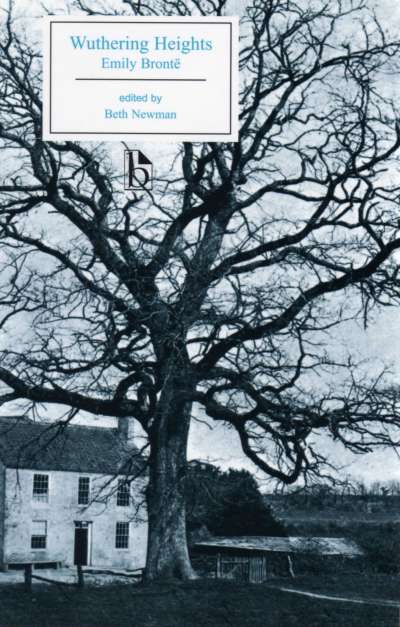Agnes Grey was one of a trio of novels that defined the “governess novel” in 1847 and 1848. Alongside Jane Eyre and Vanity Fair, Agnes Grey may be the most radical of the three. Agnes Grey is the younger daughter of a clergyman and his wife of modest means, cherished but also infantilized. When her father’s mercantile investment goes disastrously wrong, Agnes decides to contribute to the family’s financial rebuilding by working as a governess, despite her mother’s and sister’s misgivings about her fitness for such work. Her first position is indeed trying, as the parents and children are uncouth and even cruel. Her second position is slightly more congenial, but she is still manipulated and ignored. Yet Agnes perseveres and begins to build relationships outside the family, most importantly with a kind, empathetic young curate. As life brings more trials to Agnes and her family, we watch her persist on her steady path of hope and determination.
This Broadview Edition provides extensive historical documents on the novel’s reception, the role of the governess in Victorian England, and contemporary debates about thetreatment of non-human animals.
Comments
“This engaging new edition makes a strong case for the radical nature of Anne Brontë’s novel and for its place as a seminal feminist work. It contains a wealth of important material for students, especially texts from the Victorian period about the plight of governesses and the issues of animal cruelty and animal rights—key historical contexts for the novel. The introduction provides an excellent grounding in the period and in the place of Anne Brontë’s novel in relation to its era and to the books of her more-famous sisters. It’s a timely and necessary contribution to Brontë studies.” — Deborah Lutz, University of Louisville
“Anne Brontë has been the frequent recipient of barbed faint praise that inevitably positions her as ‘the other’ Brontë sister. But in this well-conceived and reader-friendly new edition of Anne’s debut 1847 novel, Agnes Grey, Robin Inboden lays out a persuasive case for why we should care about Brontë’s writing for its own sake. Even if we may not quite join late-Victorian Irish novelist George Moore in his startling judgment that Agnes Grey is ‘the most perfect prose narrative in English literature,’ Inboden’s resourcefully intelligent editorial work allows us to appreciate this novel for the rich and fascinating text that it is. Especially welcome here is the extensive appendix containing a range of materials contextualizing the novel in relation to the early-Victorian animal welfare movement.” — Ivan Kreilkamp, Indiana University
“Broadview’s edition of Agnes Grey is a welcome contribution to the rehabilitation of Anne Brontë’s reputation and her place in Victorian literary and cultural studies.… Broadview’s editions are wonderfully affordable and feature a wealth of secondary sources, reception history, and criticism in their apparatus, making them extremely valuable and relevant for teaching and research. Robin Inboden’s new edition provides teachers, students, and literary scholars with a most welcome resource, well-timed to coincide with Anne’s bicentenary year.” — Deborah A. Logan, Victorians: A Journal of Culture and Literature













